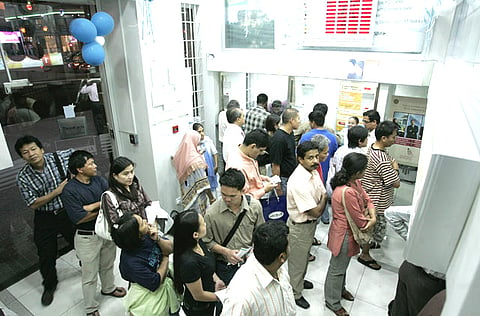Top remitter: Indians send home Dh253 billion in one year
India gets biggest chunk of the nearly $500 billion worth of money transfers processed in 2017: World Bank

Dubai: Due to higher oil prices, money transfers to low- and middle-income countries are again on the rise, reaching nearly $500 billion in 2017, and the biggest chunk of the funds went to beneficiaries in India, according to the World Bank.
The Asian country received $69 billion (Dh253 billion) out of the $466 billion worth of money sent home last year by expatriates based in various countries around the world. That’s a 9.9 per cent increase over the previous year, when money flows witnessed a sharp drop.
The Chinese were the second-biggest beneficiary of funds from overseas, receiving a total of $64 billion, while Filipinos came third with $33 billion.
Mexicans, Nigerians and Egyptians were also among the six top beneficiaries, receiving a total of $31 billion, $22 billion and $20 billion, respectively.
In total, the amount of money transferred to all destinations, including high-income countries, reached $613 billion (Dh2.3 trillion) in 2017. “The rebound in remittances, when valued in US dollars, was helped by higher oil prices and a strengthening of the euro and ruble,” the World Bank said in a statement.
Remittances aren’t only a major source of sustenance to pay the household bills, including rent, medical bills and school fees of migrant workers’ families, they’re also a major driver of economic growth for recipient countries.
However, money flows had recently hit a slump partly due to weak oil prices. In 2016, remittances to the East Asia and Pacific region dropped by 2.6 per cent, while fund flows to Europe and Central Asia experienced three consecutive years of decline.
“Remittances to many countries appear to be picking up after the slowdown in 2016,” the World Bank said.
Transfers to the whole South Asian region registered a moderate 5.8 per cent increase to $117 billion, while those to the Middle East and North Arica went up by 9.3 per cent to $53 billion, driven by strong flows to Egypt, in response to more stable exchange rate expectations.
Remittances to the East Asia and Pacific region also rebounded 5.8 per cent to $130 billion, reversing the previous year’s decline.
Money transfers to Sub-Saharan Africa accelerated by 11.4 per cent to $38 billion, supported by improving economic growth in advanced economies and higher oil prices.
The amount of money forwarded to Latin America and the Caribbean jumped by 8.7 per cent to reach a record high of nearly $8 billion. This is thanks to stronger growth in the United States. Tighter immigration rules are also believed to have impacted remittances, as migrants sent home more savings in anticipation of shorter stays in American soil.
Sign up for the Daily Briefing
Get the latest news and updates straight to your inbox



